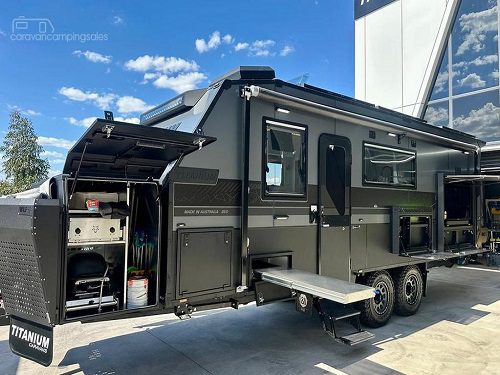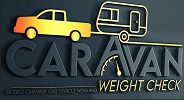
Are you gearing up for your next outback escape or coastal road trip? Towing a caravan across Australia’s diverse landscapes—from the rugged Nullarbor to the winding Great Ocean Road—demands more than just a reliable 4WD. Proper caravan towing setup is crucial to avoid sway on highways, brake failures in emergencies, or unexpected fines from roadside checks. At Caravan Weight Check, we go beyond basic weighing to empower you with knowledge that keeps your journeys smooth and stress free. In this caravan towing guide, we’ll explore proven strategies for matching your tow vehicle to your van, distributing loads for optimal stability, and navigating Australian towing regulations. Whether you’re a weekend warrior with a lightweight pop-top or a full-time nomad hauling a luxury off-roader, these insights will help you tow smarter, not harder. Ready to hit the road with confidence? Let’s dive in.
Understanding Towing Capacities: Matching Your Vehicle to Your Caravan
The foundation of safe caravan towing in Australia starts with compatibility. Not every SUV or ute is built for the same load—overlooking this can lead to strained transmissions or voided warranties.
Key Towing Metrics You Need to Know
To build a solid towing setup, familiarise yourself with these essential terms:
| Metric | Description | Why It Matters for Caravanning |
|---|---|---|
| Braked Towing Capacity (BTC) | Maximum weight your vehicle can tow with trailer brakes engaged. | Ensures your rig handles the caravan’s full load without overheating brakes or losing control on descents. Typical for family SUVs: 2,500–3,500 kg. |
| Gross Combination Mass (GCM) | Total combined weight of tow vehicle, caravan, passengers, and cargo. | Prevents exceeding legal limits, which could result in fines up to $10,000 under NHVR rules. |
| Tow Ball Weight (TBW) | Downward force on the hitch (ideally 10% of caravan ATM). | Too low causes fishtailing; too high stresses the vehicle’s rear suspension. Aim for 80–120 kg for most setups. |
| Payload Capacity | Available weight for passengers, fuel, and accessories in the tow vehicle. | Accounts for real-world additions like toolboxes or bull bars that eat into your towing margin. |
Pro Tip: Use online towing calculators from manufacturers like Toyota or Ford to simulate your loaded combo. For off-road enthusiasts, factor in a 10–15% buffer for rough terrain where weights shift dynamically.
By prioritising a matched towing setup, you’ll reduce wear on your vehicle and enhance overall handling. Remember, a well-paired duo turns long hauls into effortless adventures.
Load Distribution Mastery: Achieving Perfect Balance for Stability
Nothing derails a trip faster than an unbalanced caravan. Uneven weight can trigger dangerous sway at speeds over 80 km/h or compromise steering in crosswinds – common on Aussie highways.
Best Practices for Caravan Load Distribution
Follow these steps to optimise your caravan weight distribution and keep everything hitched tight:
- Front-Heavy Loading: Position heavy items (batteries, generators, water tanks) over or ahead of the axles—never at the rear. This maintains the ideal 10% TBW and prevents the “tail wagging the dog” effect.
- Axle Balance Rule: Keep 60% of the payload forward of the axles and 40% behind for neutral handling. Use adjustable jockey wheels to fine-tune during setup.
- Height Considerations: Lower your centre of gravity by stowing roof racks last. For high-profile vans, consider anti-sway bars to counter wind gusts in places like the Simpson Desert.
- Dynamic Adjustments: Rebalance after refuelling or unloading—full jerry cans at the back can add 200 kg of rear bias overnight.
- Tech Aids: Invest in a portable tow ball scale ($50–$100) for quick checks at campgrounds, ensuring your setup stays compliant trip after trip.
Industry stats reveal that balanced loads cut accident risks by up to 40%. Pair this with our expert advice, and you’ll tow like a pro, whether navigating Sydney’s urban sprawl or remote WA tracks.
Australian Towing Regulations: Staying Legal on the Open Road
Australia’s roads are as varied as its wildlife, and so are the rules governing safe caravan towing. From state-specific speed limits to national mass laws, compliance isn’t optional—it’s your ticket to fine-free freedom.
Top Compliance Must-Knows
- Speed Limits: Caravans over 4.5 tonnes drop to 100km/h max on highways; unbraked trailers cap at 60km/h in built-up areas.
- NHVR Standards: All tow vehicles and trailers must display compliance plates. Exceeding ATM by even 1% can lead to defect notices or impoundment.
- State Variations: In Queensland, expect stricter fatigue management for long hauls; Victoria mandates annual inspections for heavy combos.
- Insurance Implications: Undeclared mods (e.g., suspension upgrades) can invalidate coverage—always notify your provider.
- Eco-Towing Rules: Low-emission zones in cities like Melbourne may restrict diesel utes; check ahead for EV-friendly charging en route.
Stay ahead by downloading the free NHVR app for real-time updates. Non-compliance costs average $600 in fines, but peace of mind? Priceless.
Advanced Towing Accessories: Upgrades for Ultimate Confidence
Elevate your caravan adventures with gear that complements a solid setup. From stability enhancers to monitoring tools, these accessories make towing feel second nature.
Recommended Upgrades for Aussie Conditions
- Weight Distribution Hitches (WDH): Essential for vans over 2 tonnes—distributes TBW evenly, reducing rear squat by 50%.
- Electronic Brake Controllers: Proportional units adjust braking force automatically, ideal for downhill runs in the Blue Mountains.
- Tyre Pressure Monitors (TPMS): Wireless sensors alert to drops, preventing blowouts on hot bitumen.
- Reverse Cameras & Sensors: Dual-view systems for hitching in tight caravan parks; solar-powered options for off-grid stays.
- Suspension Kits: Airbags or heavy-duty shocks for corrugations—brands like Old Man Emu shine in outback towing.
Budget $500–$2,000 for a starter kit, and recoup savings through fewer repairs. For custom recs, chat with our team—we’ve seen it all from Broome to Brisbane.
Frequently Asked Questions About Caravan Towing
Q: What’s the ideal tow vehicle for a 2,500kg caravan?
A: A mid-size 4WD like the Toyota Prado with 3,000kg BTC offers the best balance of power and economy for most families.
Q: How often should I check my towing weights?
A: Annually, or after any mods/additions like awnings or slide-outs—weights creep up fast!
Q: Can I tow in national parks with a caravan?
A: Yes, but stick to designated tracks; permits are required in places like Kakadu, and soft-roaders need low-range gearing.
Q: What’s the biggest towing mistake newbies make?
A: Overpacking the rear—always weigh post-load to catch imbalances early.
Ready to Optimise Your Caravan Towing Setup?
This Australian caravan towing guide we describe equips you with the tools for safer, smarter travels, but nothing beats hands-on verification. At Caravan Weight Check, our mobile experts deliver precise insights tailored to your rig, ensuring every kilo counts.
Book your session today for just $150 and unlock the full potential of your setup. Enquire now—let’s make your next adventure unforgettable. Safe towing from the Caravan Weight Check crew!


